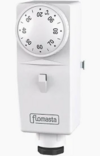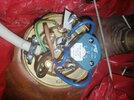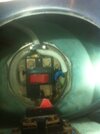And heat in the tank will cause water to circulate in the tank from that point. But if the top immersion is used, and the water gets up to temperature, then you switch to the bottom immersion using the same thermostat then clearly the bottom thermostat will do nothing until water at the top cools down.
There are some tanks with baffles to stop the water circulating, often used with boilers to make tea or coffee, but most cylinders will allow water to circulate, and because the water can circulate using an immersion low down, it can take some time from when turned on, to having warm enough water at the taps.
The old idea was to have two thermostats, one in the bottom immersion being set higher to the one in the top, so the bottom immersion will inhibit the top one turning on. So only when all the water has been used will the top one work.
There is no reason why a change over relay should not be used, basic idea is if the top one activates it stops the bottom one switching on, but this would not work with a single thermostat.
But a tank thermostat

typically has change over contacts, the one shown has a 15 amp change over contacts for a resistive load, so if hot it heats bottom or long immersion, and if cold the top one or short immersion, if set well below the thermostat built into the duel immersion heater, it will heat the top to say 50ºC then switch to bottom, which will continue to heat whole tank until say around 65ºC so a simple timer was boost would run on immersion at off peak times, with a boost button so if water is found to be cold, one can press the boost.
If one want automatic boost then it gets more complex, but a second thermostat near top of the tank in parallel with the time clock could auto switch on at say 45ºC.
But the problem is finding some one when it goes wrong to fix it.





